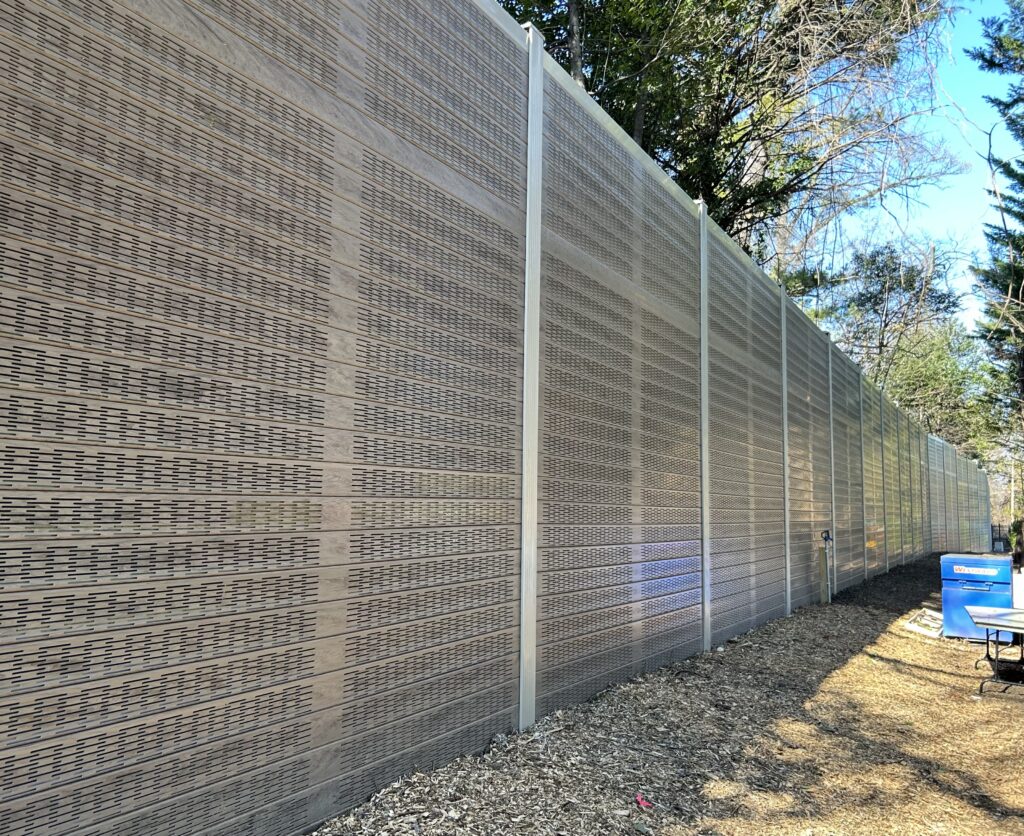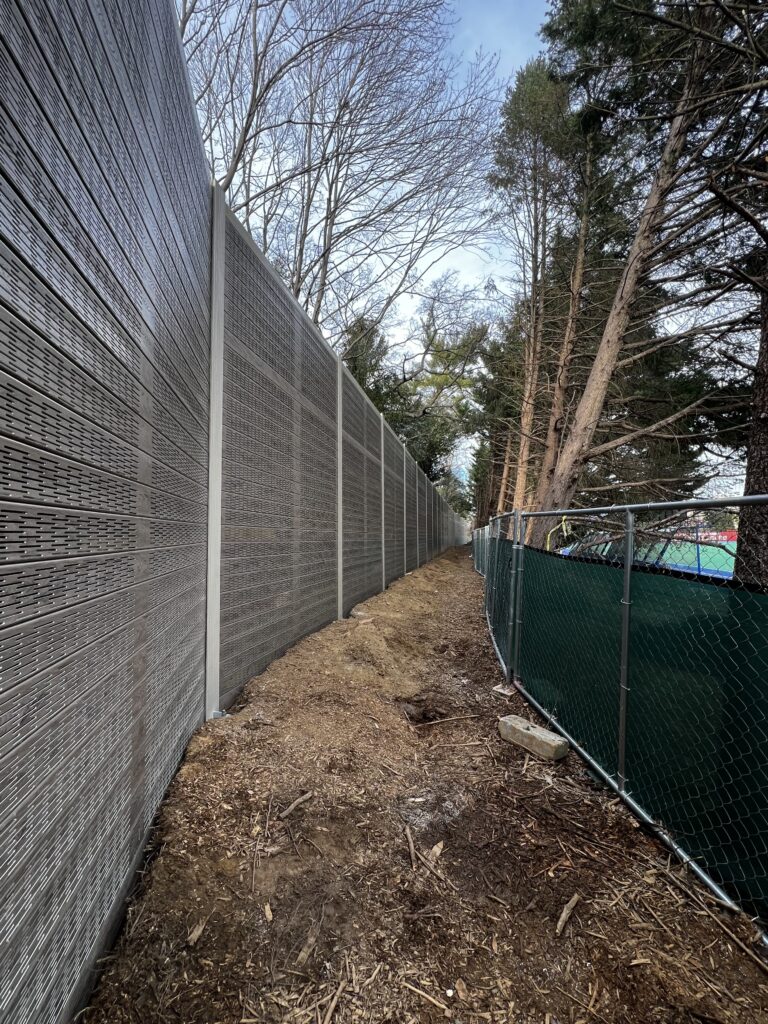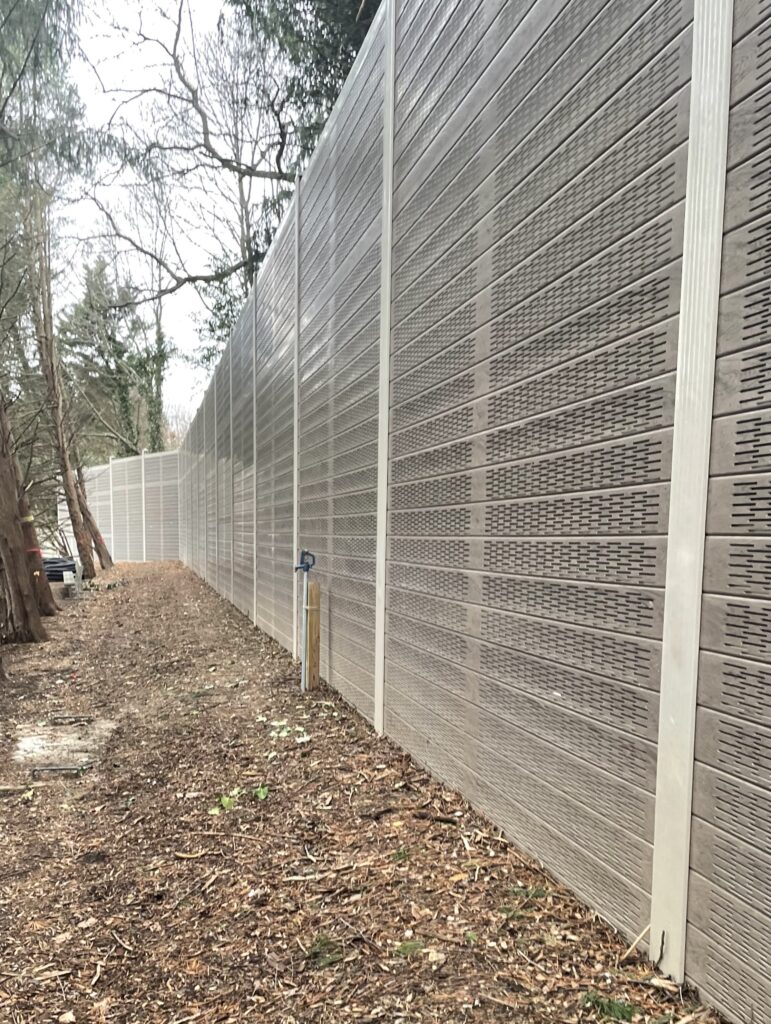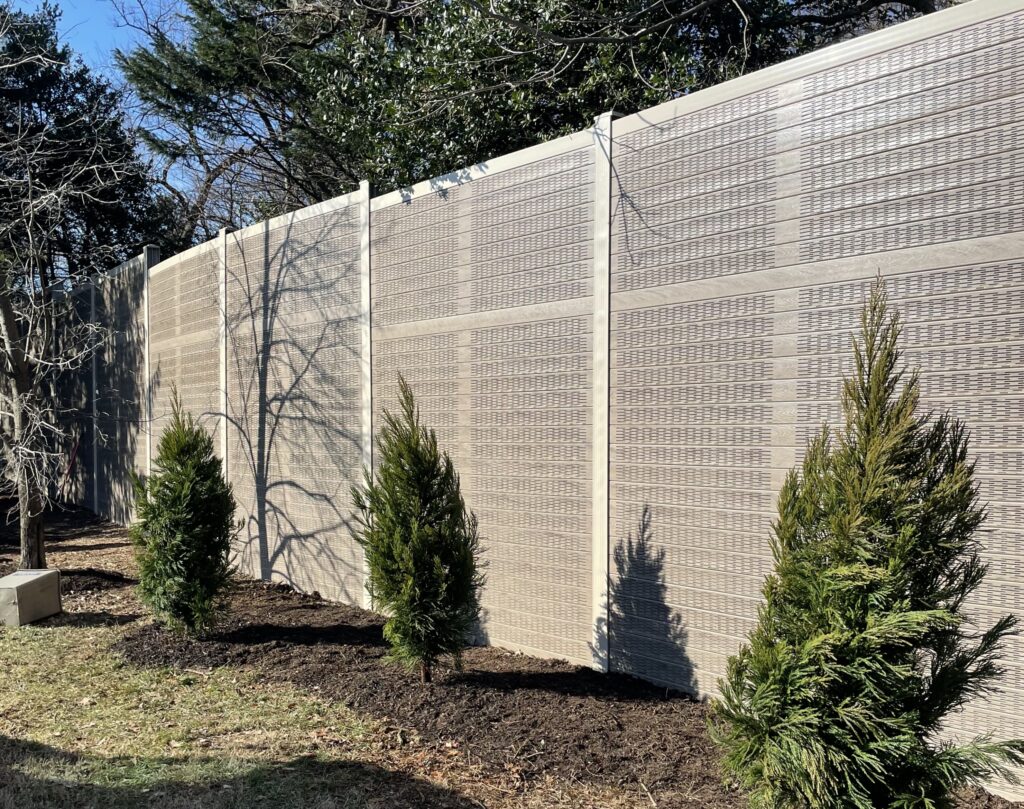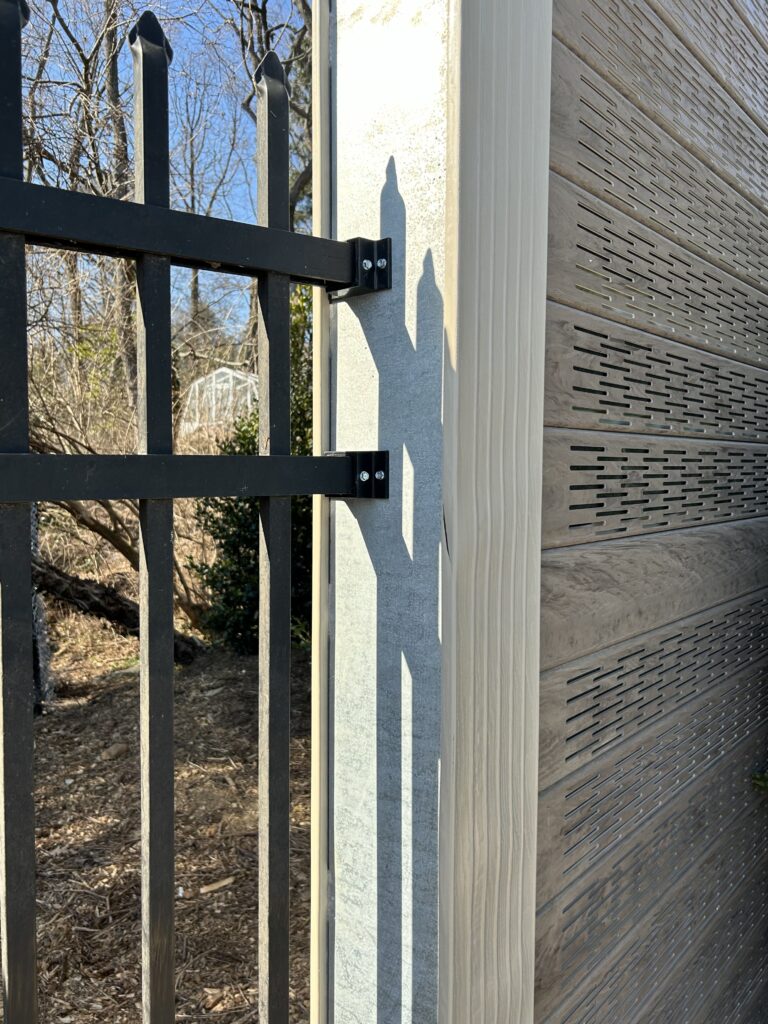April 5, 2024
AIL Sound Walls recently designed and supplied a new noise barrier wall as part of an upgrade to American University’s Jacobs Field in Washington, DC. The 360′ long by 15′ high installation helps protect nearby residents from noise created by practices and events at the field.
The AIL Sound Walls team collaborated with the university for a few years before this project came to fruition. We met on-site multiple times and explored various wall heights, lengths and panel types. We provided preliminary engineered drawings up front, which they used to obtain competitive bids on the project. The winning bid used our longer Silent Protector XL Series panels to maximize the spans and reduce the costs.
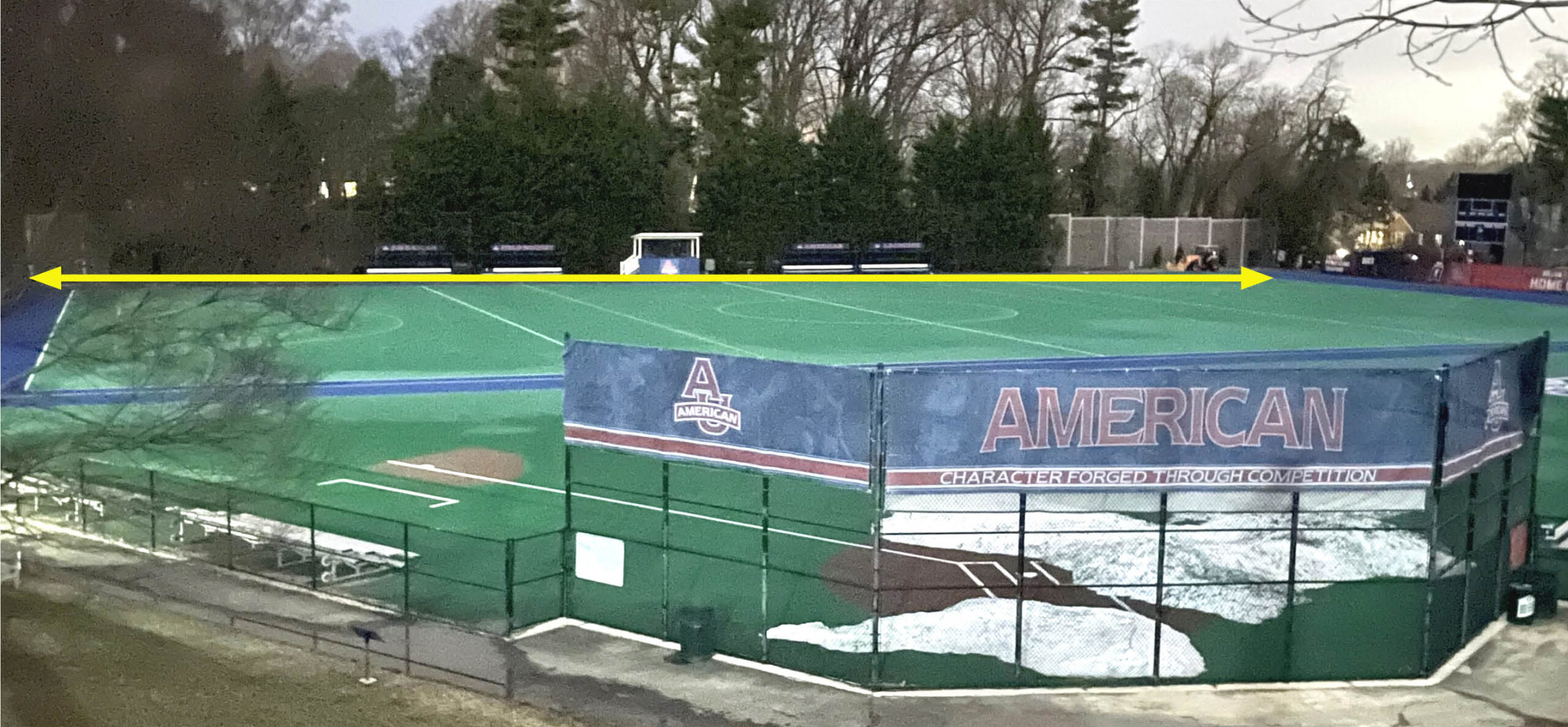
Longer Silent Protector XL panels save on foundation costs
Our Silent Protector XL and Tuf-Barrier XL panels are available in lengths of up to 16′ and that means fewer panels, posts and foundations for an even lower installed cost. With this XL product innovation, we can design our sound barrier walls with longer spans for all types of wind conditions — even in hurricane zones. This installation featured our Upgraded Finish Level in Honey Maple woodgrain.
We were also able to support the university as they consulted and worked with the residents via their AU Neighborhood Partnership and their Community Liaison Committee to evaluate the impacts of the sound barrier wall.
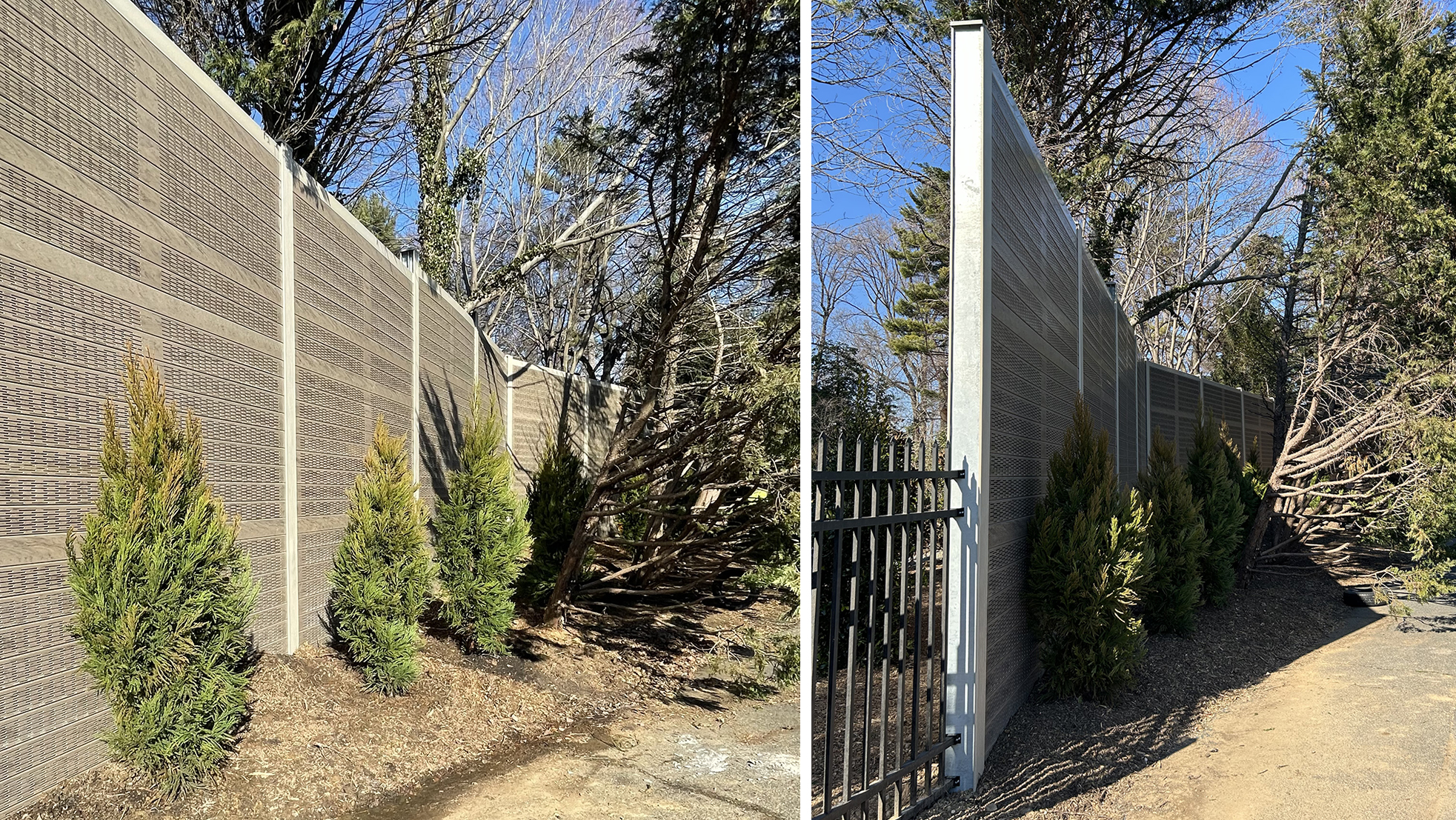
The wall location ran through a partially wooded area and both the university and the residents were keen to preserve as many trees as possible. Everyone was pleased when we were able to plan a run that required as little trimming as possible to the existing trees.
Silent Protector: top-performing noise barrier walls
Our Silent Protector sound absorption wall panels are engineered for maximum noise reduction. Made from recycled and recyclable perforated PVC panels and filled with acoustical mineral wool, Silent Protector is one of the industry’s top-performing sound walls, with a Sound Transmission Class (STC) rating of up to 39 and a Noise Reduction Coefficient (NRC) of 0.95.


